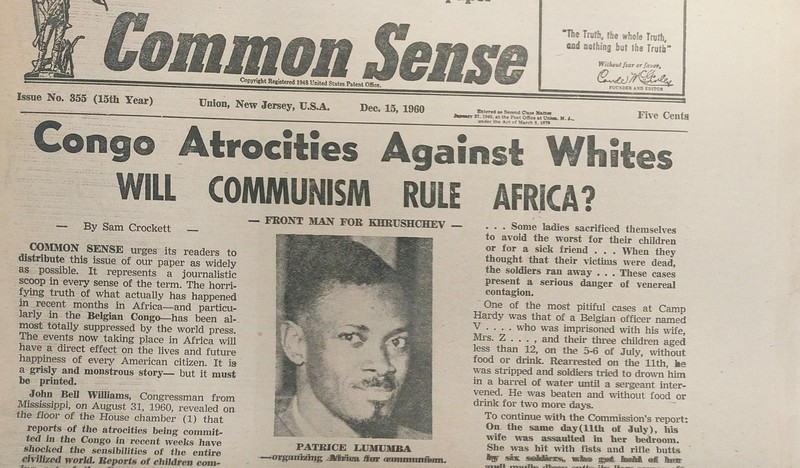Propaganda Material
These items are clippings from an anti-communist newspaper from New Jersey. The article depicts the media’s bias through subvert support of segregation. Despite being a member of the press, the entity ignores their obligation to uphold fundamental editorial policies of supporting law and order. This was one of the more nuanced attempts to discredit segregation by linking the effort to violent revolts occurring at the time in the Congo. Crockett repeatedly describes the brutality in which the white women were raped with their family watching for most of the piece. The author also claims to have received pamphlets given to the Congolese soldiers detailing communist principles. This was juxtaposed to comfortability the Congolese were afforded by living under the Belgians. Life was described as comfortable with a focus on the benefits they received from their colonizers such as housing allowance for two story houses, free medical care, and averaged $20 earnings per month (the median American monthly income was $140). This was considered equal treatment despite having to live subservient in a colony. This was an attempt to link the downfall of the Belgian colony with the advent of desegregation. The paper employs white savior complex by stating the Belgian’s lifted the blacks out of the jungles. It concludes with questioning the success of enforced integration and repeating the statement that they turned on their benefactors in “bestial” fashion. Jack Nelson, a reporter since the civil rights era, states that it’s the presses duty to shape public opinion which in turns catalyzes laws that shapes the democracy. Papers with similar opinions were not an anomaly and were circulating throughout the US informing public opinion or reinforcing beliefs. As Nelson states one paper from Jackson, Mississippi newspaper suggest flamethrowers be used on civil rights demonstrators. The brutality of the pieces informed their stance on the topic of segregation and reflected the wide divide in opinions during the period.
Nelson, J. (2001). The Civil Rights Movement - A Press Perspective. Human Rights, (Issue 4), 3. Retrieved from http://search.ebscohost.com/login.aspx?direct=true&db=edshol&AN=edshol.hein.journals.huri28.43&site=eds-live
Sam Crockett, “Conclusion to Common Sense Lead Story,” Mapping Nature ~ English 1102 Fall 2019, accessed November 22, 2019, http://mapping-nature.org/omeka2019/admin/items/show/112.
U.S. Census Bureau (1963). Consumer Income. Retrieved from https://www2.census.gov/prod2/popscan/p60-039.pdf
